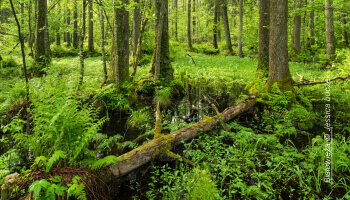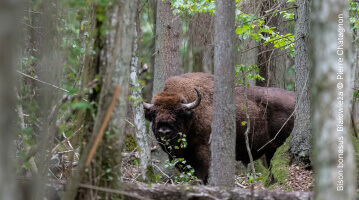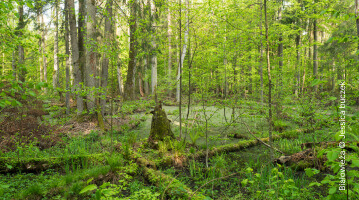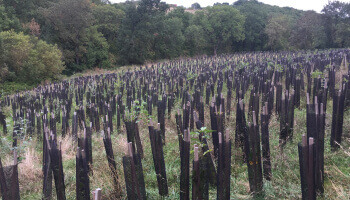Primary, secondary, virgin or natural... the different types of forests
Whether lush or sparse, enclosed or isolated, boreal, temperate or tropical, forests are everywhere, but no two are ever the same.
According to the FAO 1 (Food and Agriculture Organization of the United Nations), a forest is “land spanning more than 0.5 hectares with trees higher than 5 metres and a canopy cover of more than 10%”. But looking beyond the trees, there are lots of different types of forests!
1 FAO. 2021. Global Forest Resources Assessment 2020: Main report. Rome.
Primary and secondary forests
Intact ecosystems, primary forests are forests that haven’t been damaged by human activity and have managed to reach a grand old age without having their biodiversity reduced because of anthropogenic phenomena. Primary forests currently represent just under 30% of the world’s forests. Most can be found in remote areas, chiefly in Brazil, Canada and Russia, which together account for 61% of them.
In contrast, secondary forests are forests that have undergone significant changes at the hands of humans, including destruction and logging. Secondary forests bear the scars of this damage to the point their biodiversity has been seriously affected. They make up the vast majority of forests that we know and spend time in. Unlike primary forests, secondary forests are home to a lower proportion of very old species, less genetic diversity, a lower degree of naturalness, as well as greater ecological fragmentation.
They’re generally made up of smaller trees, with fewer dead trees left where they fell on the ground (despite the fact these form important micro-ecosystems in primary forests), as well as denser undergrowth due to sparser canopies, which allow more light to reach the ground. They can still shelter native species, but this depends on the extent of conservation efforts and any logging that may have taken place in the past.
The most important thing to remember is that if a primary forest can (very sadly) be degraded to a secondary forest, then the opposite must also be true: a primary forest can be recreated out of a secondary forest, provided you give it time... lots of time!
Virgin, natural, ancient and primitive forests
These four words actually describe concepts very closely related to primary forests, but with a few subtle differences all the same.
Firstly, we usually associate the term virgin forest with tropical environments. Think abundance, lianas as far as the eye can see, a cacophony of birds all in shimmering colours. These are generally equatorial forests in the Amazon or Yucatan regions that have been designated as “virgin” (meaning “devoid of any human presence”) since the very first European explorers passed through to better deny the existence of indigenous people who had made them their territory . The term “virgin” is therefore more of a cultural construct than a biological reality. Inhabited for centuries, they were already virgin in name only even by the time the Europeans arrived!
As for a natural forest, it’s all a question of degree and scale. We tend to assess the “naturalness” of a forest by looking at the richness of its biodiversity, the absence of anthropogenic disturbances, the intact nature of its ecological processes, etc. Natural forests are therefore forests that evolve naturally (as opposed to artificial environments completely controlled by humans). For example, the organisation Réserves Naturelles de France uses a “naturalness gradient” criterion to classify its forest areas as “natural forests”, in accordance with anthropisation thresholds . As such, they don’t exclude forests affected by human activity, but rather focus on an ecosystem’s characteristics to determine its naturalness.
Another near-synonym, an ancient forest has no established scientific definition. It’s a commonly used term that tends to differentiate forests based on their age, rather than any specific qualities. People generally refer to a forest as ancient if it’s over 150 years old (although this can vary depending on the environment). One thing to keep in mind is that we sometimes come across forests that we’d describe as secondary, because exploitation has occurred, but where disturbances stopped so long ago there’s no longer any trace. The criterion to really focus on is the age of the trees that make up the forest, even though primary forests also rely on fresh seedlings to ensure they can renew and survive for centuries!
Finally, a primitive forest is often confused with a primary forest. Like virgin forests, they’re really more of a cultural construction than a scientific reality. The term primitive refers to wild environments that we don’t imagine have ever been touched by human activity, covered in ancient trees and with abundant biodiversity.
2 Géoconfluences. ENS Lyon. 2022
3 Nature Reserve Forest Heritage. Réserves Naturelles de France. 2017
Natural regeneration and planted forests
The FAO has adopted another distinction to characterise the world’s forests: naturally-regenerated or planted. According to the UN body, naturally-regenerated forests account for 93% of the world’s forest coverage. It’s quite a generous definition, as it includes any forest “predominantly composed of trees established through natural regeneration”. As a result, this category includes primary forests, in the strictest sense, but also secondary forests that may have seen felling, management methods and seeding, so long as these particular plants represent less than 50% of the trees in the forest.
On the other hand, planted forests (which make up 7% of the world’s forests) are those “predominantly composed of trees established through planting and/or deliberate seeding”. These include plantation forests that are intensively managed to produce wood, fibres or energy, as well as other types of planted forests where the aim may be to restore ecosystems, protect the soil or recreate natural environments.

What is a primary forest?
Incredible sanctuaries of biodiversity and model ecosystems, primary forests are among the last places on Earth not yet disturbed by human activity. Without even knowing it, they’re an essential part of the chain that makes life on Earth possible, and they deserve our full attention!

Primary forests in Europe
The last survivors of a greener past and teeming with biodiversity, Europe’s primary forests deserve our full attention – and protection!

Other primary forests around the world
Whether boreal, temperate or tropical, primary forests still cover a few magical parts of the planet. But their surface area is continuing to dangerously decrease...

Creating a primary forest
What’s the recipe for recreating intact forests with abundant biodiversity? Do absolutely nothing... or rather, leave nature to get on with it!
